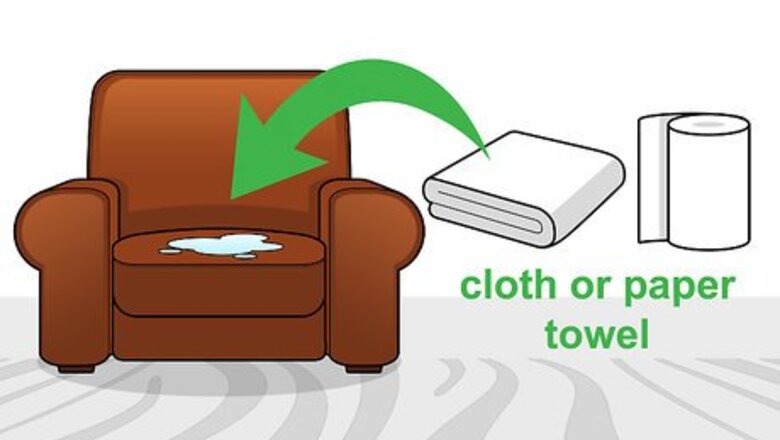
views
Treating Oil and Grease Stains
Blot the spill immediately. When you notice the spill, pick up as much of it as possible with a clean, dry cloth or paper towel. Press the towel against the stain so you don't spread it. Sometimes this will be enough to prevent staining from food, makeup, or body oil. Regular treatment of the leather with a conditioner will help your item resist these stains.
Powder the stain with corn starch. Cover dried stains with corn starch, talcum powder, or baking soda. Allow the powder to rest on the stain for a few hours or overnight. Over time, the powder will lift the grease or oil.
Wipe up the powder. Use a clean cloth to brush off the powder. Check the couch to see if the stain has disappeared.
Repeat cleaning with more corn starch. Cover stubborn stains again with corn starch or an alternative powder. Rub the stain gently with your fingers. The heat generated by your fingers may help draw out older stains. You may need to repeat this process several times.
Eliminating Liquid Stains
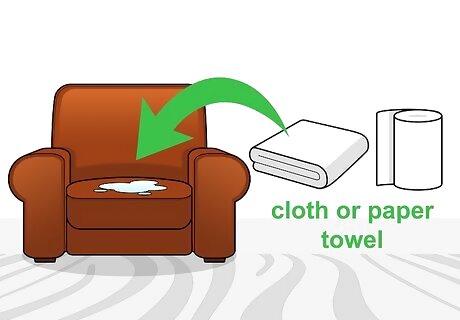
Soak up fresh stains. Quickly apply cloth or paper towel to the stain. Try to blot out as much of the liquid as possible without spreading it. Fan the area until it dries. Liquid spills are a big threat to leather, so you may end up with a large, dark stain.
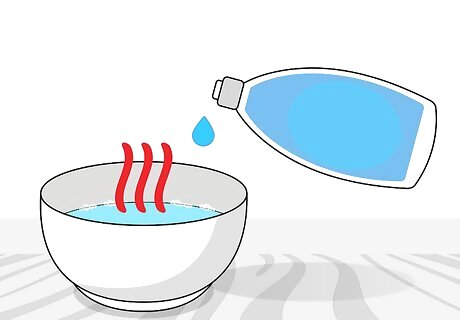
Mix a mild detergent and water. Fill a container with warm water. Add a squeeze of a mild hand soap or liquid detergent like Dawn or Murphy Oil. Stir the soap into the water until you have a bubbly cleaner. Soap is useful for basic treatment and removing odors, such as from urine stains. Water alone should be used to treat water stains. Store-bought leather cleaning products may also be used.
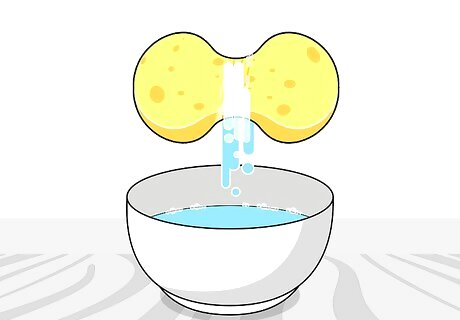
Dampen a sponge in the mixture. Dip the sponge or cloth in the soapy water to get it nice and damp. Before using it on the stain, wring out the sponge. Make sure the sponge doesn't drip at all. It shouldn't feel soaked. You don't want to introduce more water to the leather.
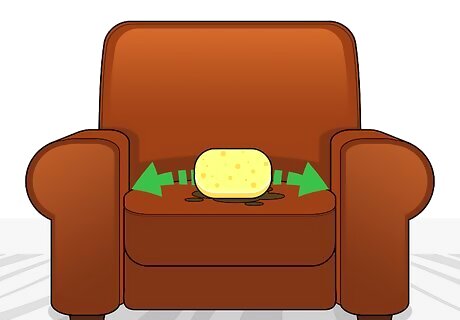
Wipe off the leather with the sponge. Start on the stain. Move the sponge from the stain to one of the edges of the leather. Do not scrub. The sponge will leave behind less water as you move it away from the stain. Continue doing this until you've cleaned the entire surface of the leather. This seam to seam cleaning will prevent water stains from forming. The leather will dry uniformly, so you won't need to worry about drying it off yourself unless you use too much water.
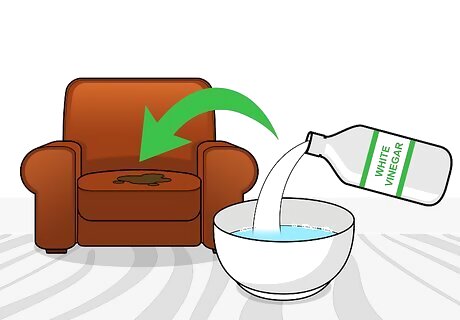
Treat stubborn stains with white vinegar. You can add a couple of drops of vinegar to the soapy water you used earlier. You may also combine equal parts water and vinegar for a stronger cleaner. Dip your cloth in, wring the cloth out, and then use it to spot treat the stain. After a few swipes, check the cloth. If it appears dirty, rinse it off in water. For white and beige couches, try mixing equal parts lemon juice and cream of tartar. Let the paste rest on the stain for ten minutes before wiping it off with a damp sponge. EXPERT TIP Mallika Sharma Mallika Sharma Certified Leather Care Technician Mallika Sharma is a Certified Leather Care Technician and the Founder of The Leather Laundry, a niche spa service for luxury leather gear in India. Mallika specializes in leather cleaning, coloring, repairing, and restoring for shoes, handbags, jackets, wallets, belts, and sofas. She holds a Master’s degree in Finance and Investment from the University of Edinburgh Business School. Mallika is a certified Professional Leather Care Technician and trained with the globally reputed leather care company, LTT in the United Kingdom. Mallika Sharma Mallika Sharma Certified Leather Care Technician Large leather stains should be handled by professionals. Large discolored areas or stains that have fully set into leather furniture cannot be spot treated and removed. lf it has fully set, professional leather cleaning and repair experts can correctly color match the original shade and seamlessly blend the affected area back into the surrounding material.

Dry the leather with a clean cloth. Gently rub the stained area to remove the vinegar cleaner. This should also be done during soap treatment if you notice the leather getting too damp. Limited exposure to these cleaners will wear out the leather, but won't damage it permanently.
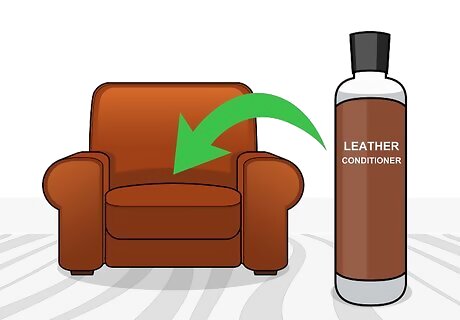
Apply conditioner to rejuvenate the leather. Find leather conditioners wherever leather or general cleaning supplies are sold. Choose a product that is suitable for your type of leather and follow the directions on the bottle. The instructions will likely have you work a small amount of conditioner into the leather. You can use a dry cloth to spread it from seam to seam over the entire area you treated earlier.
Removing Ink and Mold Stains
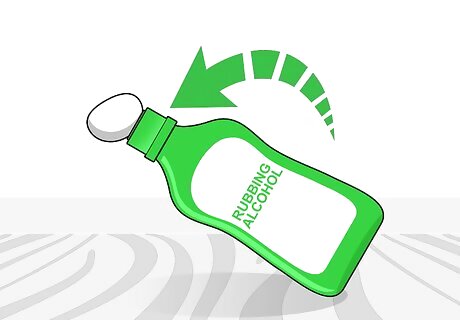
Moisten a cotton ball with rubbing alcohol. Tip the bottle of rubbing alcohol over a little. Hold a cotton ball up to the mouth of the container or dip a cotton swab inside of it. Dampen the cotton, making sure it isn't saturated or dripping. Rubbing alcohol and cotton balls can be found in the personal care sections of any drug or general store.
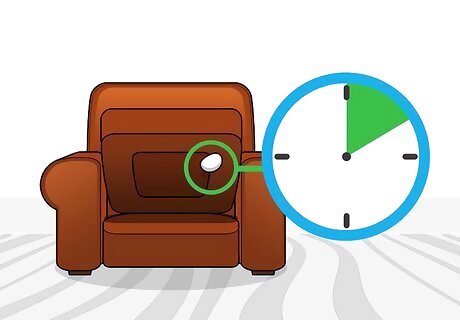
Spot test the rubbing alcohol in a hidden area. Choose an area that isn't normally seen, such as under couch cushions or a bag's inside corner. Press the cotton to the leather. Allow the rubbing alcohol to sit for ten minutes, then check to see if it left a stain.
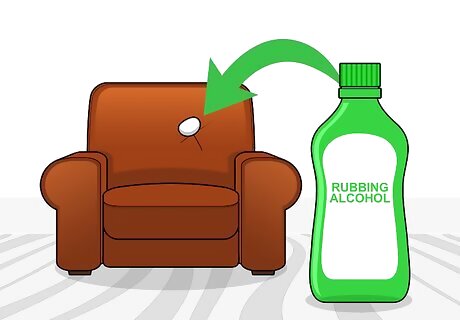
Rub the alcohol into the stain. Take the dampened cotton ball and place it on the ink or mold mark. Gently rub the area in a circular motion. The ink will begin to disappear, although the leather will also lose some of its moisture.
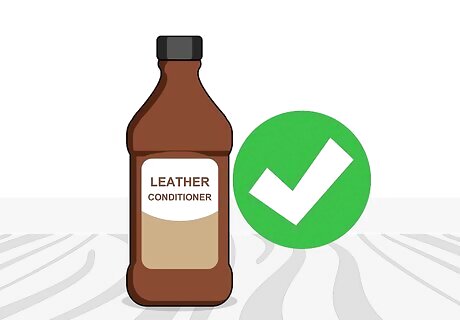
Condition the leather. Use your leather conditioner to treat and preserve your object. At the very least, spot treat the area by applying a little bit of conditioner and working it into the cleaned area. Take this opportunity if you can to apply conditioner from seam to seam on the surface you cleaned.
Cleaning Simple Stains
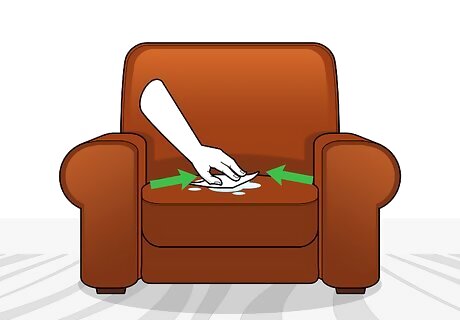
Wipe up as much of the spill as possible. As soon as you notice the spill, treat it with cloth or paper towels. Blot the outside edge of the stain first and work towards the center. This will keep the stain from spreading and setting.
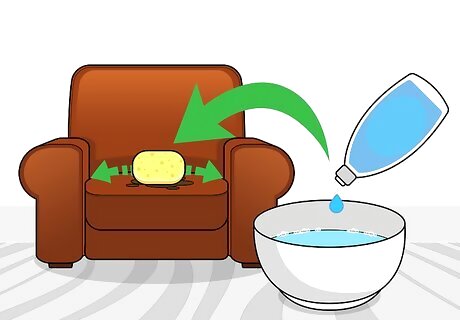
Wash the stain with soap and water. Most dirt and food stains will come off with a basic washing. You may try wiping up the stain with lukewarm water or a mixture of water and a squeeze of a mild soap. Make sure the sponge or cloth is damp rather than soaked, then wipe it from side to side across the leather. A leather cleaner is a useful alternative. It will protect the leather and prevent the stain from setting.
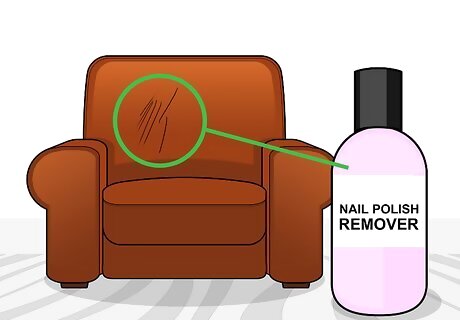
Erase scuff marks with nail polish remover. For stubborn marks, such as scuff marks or scratches, try acetone. Dampen a cotton ball or swab in nail polish remover. Rub the acetone into the mark with circular motions.
Maintaining Leather

Vacuum off the leather. Vacuuming removes dust and debris that can cause stains. It can also prevent dirt from getting into the leather when you treat stains. Do this at least twice a month. Use a soft brush attachment to get into crevices.
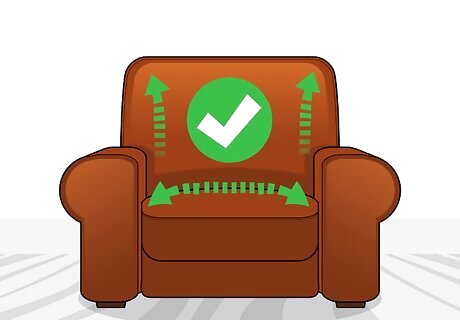
Clean along the leather's grain. Look carefully at the leather. You may notice that the fibers move in a certain direction. Try to work along the direction of the grain during basic cleaning. It'll keep your leather healthier for longer.
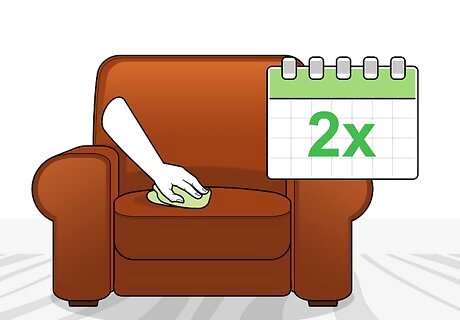
Wipe down the leather twice a month with a damp cloth. Dampen a clean cloth in warm water. You may also use your mild hand soap, dish detergent, or leather soap. Make sure the cloth isn't dripping or soaked. Be gentle but quick. Do this up to once a week.
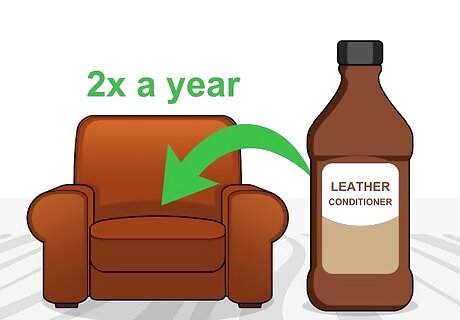
Apply leather conditioner twice a year. Conditioner protects the leather fibers, keeping them strong and resistant to stains. Get a store-bought conditioner and follow the directions on the label. Typically, you only have to do this twice a year. In areas with dry heat, you'll have to do this three or more times a year to keep the leather from drying out. After cleaning up a stain, you should also condition the leather. Homemade conditioner can be made out of one part white vinegar and two parts linseed or flax oil. Wipe a cloth in circular motions to work in the conditioner, then let it rest overnight.



















Comments
0 comment